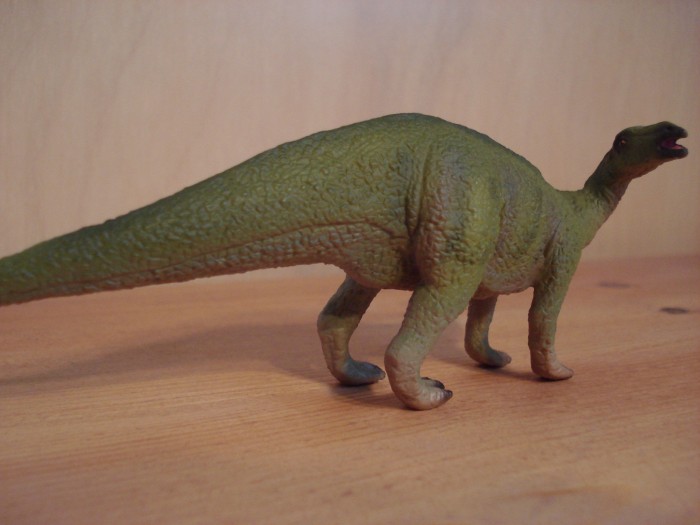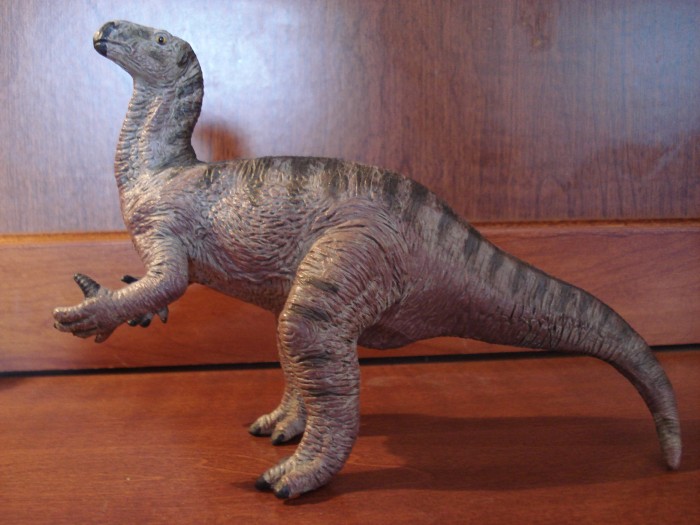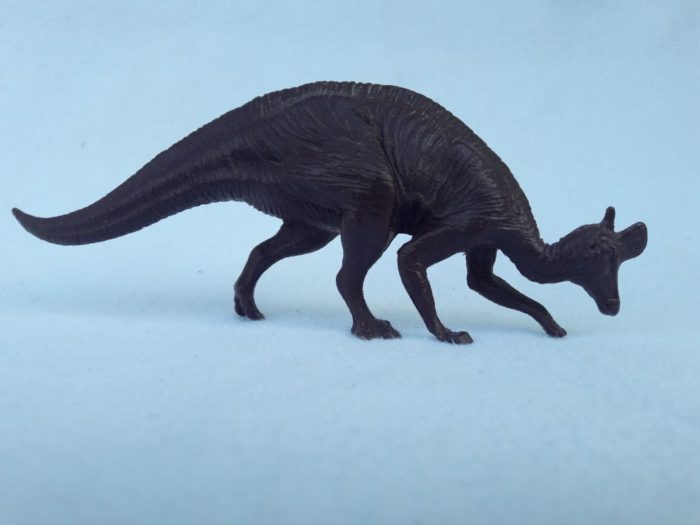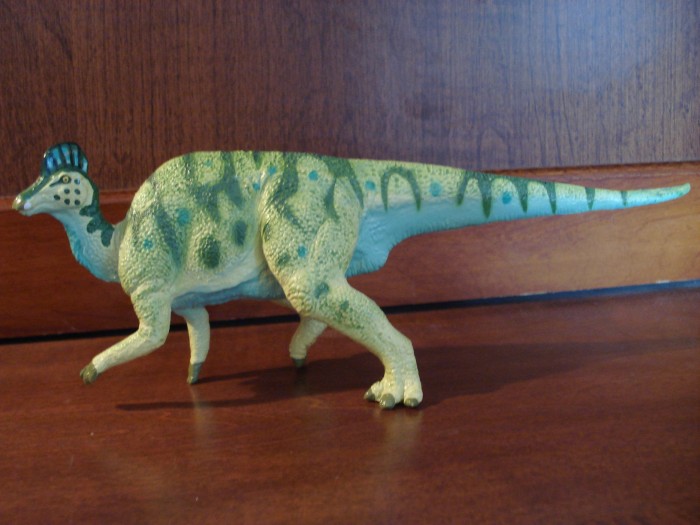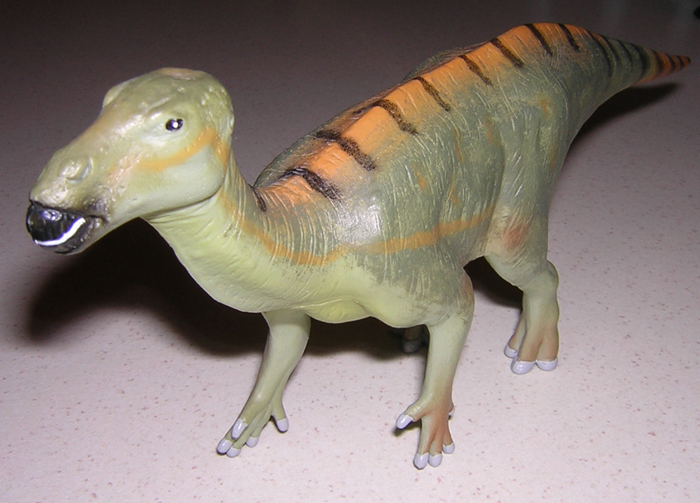Review and photos by Griffin
Tenontosaurus was an Iguanodontid ornithopod dinosaur that lived in the Western United States during the early Cretacious period. In life it would have co-existed with dinosaurs like Iguanodon, Dienonychus, Utahraptor and Acrocanthosaurus. Thanks to a Tenontosaurus skeleton discovered with Dienonychus chew marks on its bones in addition to Dienonychus skeletons nearby, the idea of pack-hunting Dromaeosaurs is now widely accepted. Unfortunately this has also lead to the image of poor Tenontosaurus to ALWAYS be the prey item for Deinonychus. (Seriously, google image search “Tenontosaurus”. Like 80% of the images that pop up will be of it being attacked and/or eaten by the Deinonychus.) Medullary bone tissue, which is used by modern birds for laying eggs, has also been found on the bones of Tenontosaurus fossils.
Classification: Ornithopod
Review: Iguanodon (Carnegie Collection by Safari Ltd)
Review: Lambeosaurus (Invicta)
Review: Muttaburrasaurus (Collecta)
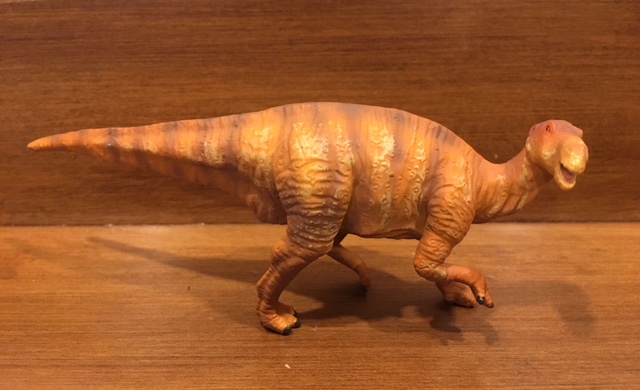
2.8 (16 votes)
Photographs by Suspsy
Muttaburrasaurus was an iguanodontid ornithopod from the Lower Cretaceous of Australia. It was seven metres long and its hallmark was a domed snout. Scientists suggest that Muttaburrasaurus had enlarged nasal caves, some even think that it had inflatable sacs for courtship displays or sounds.
Muttaburrasaurus was an iguanodontid ornithopod from the Lower Cretaceous of Australia. It was seven metres long and its hallmark was a domed snout. Scientists suggest that Muttaburrasaurus had enlarged nasal caves, some even think that it had inflatable sacs for courtship displays or sounds.
Review: Muttaburrasaurus (Invicta)

4.9 (19 votes)
Review and photos by Marc Vincent aka Horridus
One of the more recent of Invicta’s dinosaurs, this Muttaburrasaurus dates from 1989. This model is often overlooked when compared with others in the range, especially the younger Lambeosaurus, but it demonstrates perfectly how far Invicta’s dinosaur designs had progressed, making their untimely demise all the more unfortunate.
One of the more recent of Invicta’s dinosaurs, this Muttaburrasaurus dates from 1989. This model is often overlooked when compared with others in the range, especially the younger Lambeosaurus, but it demonstrates perfectly how far Invicta’s dinosaur designs had progressed, making their untimely demise all the more unfortunate.
Review: Parasaurolophus (2007 version) (Replica-Saurus by Schleich)

4.6 (17 votes)
Parasaurolophus is a well known lambeosaurine dinosaur from Late Cretaceous North America, where it lived near the Western Interior Seaway. It sported a large crest on its skull which may have been used for making vocalizations and has caused this genus to be easily recognizable to the public.
Review: Corythosaurus (Carnegie Collection by Safari ltd)
Review: Iguanodon (Replica-Saurus by Schleich)

3.9 (12 votes)
The primitive ornithopod dinosaur Iguanodon lived during the Early Cretaceous period in Europe, approximately 125 million years ago. Animals like Iguanodon eventually gave rise to the hadrosaurs of the Late Cretaceous. In the past, numerous remains from all over the globe have been attributed to this genus, spanning from the Late Jurassic all the way until the end of the Cretaceous period, but current research suggests that the only valid species of Iguanodon (I.
Review: Parasaurolophus (Kleinwelka)
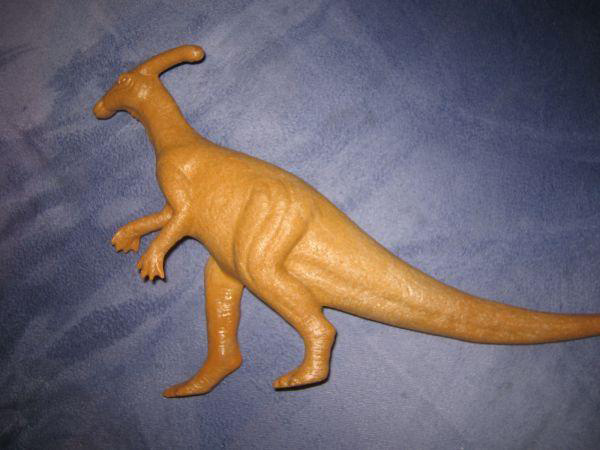
4.1 (9 votes)
Review and photos by Stefan Schröder (alias Libraraptor)
Up for review today is Kleinwelka Parasaurolophus which dates back to the 70s or 80s, when the owners of the Kleinwelka dinosaur park decided to bring out some souvenir toys looking like small versions of the dinosaurs arranged in the park.
Up for review today is Kleinwelka Parasaurolophus which dates back to the 70s or 80s, when the owners of the Kleinwelka dinosaur park decided to bring out some souvenir toys looking like small versions of the dinosaurs arranged in the park.
Review: Iguanodon (Walking with Dinosaurs by Toyway)
Review: Edmontosaurus (Schleich)
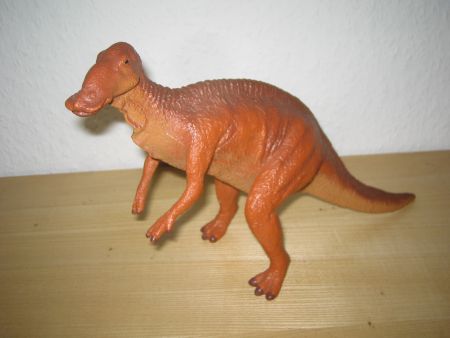
4.2 (30 votes)
Review and photos by Stefan Schröder (alias Libraraptor)
It is time to pay tribute to a real classic: Schleich 1997 Edmontosaurus! Being a huge figure indeed, its size hits the eye immediately. It can compete with the 12 years younger Spinosaurus effortless: 26 centimetres long and 17 centimetres tall, it definitely is one of the larger hadrosaur reconstructions out there.
It is time to pay tribute to a real classic: Schleich 1997 Edmontosaurus! Being a huge figure indeed, its size hits the eye immediately. It can compete with the 12 years younger Spinosaurus effortless: 26 centimetres long and 17 centimetres tall, it definitely is one of the larger hadrosaur reconstructions out there.
Review: Lambeosaurus (Collecta/Procon)

2.5 (17 votes)
Review and photos by Stefan Schröder (alias Libraraptor)
This Collecta Lambeosaurus is indeed a strange reconstruction of this upper Cretaceous hadrosaur. In this review I would like to explain why.
But basics first: The Lambeosaurus measures 14, 5 centimetres in length and is 6, 5 centimetres tall.
This Collecta Lambeosaurus is indeed a strange reconstruction of this upper Cretaceous hadrosaur. In this review I would like to explain why.
But basics first: The Lambeosaurus measures 14, 5 centimetres in length and is 6, 5 centimetres tall.

